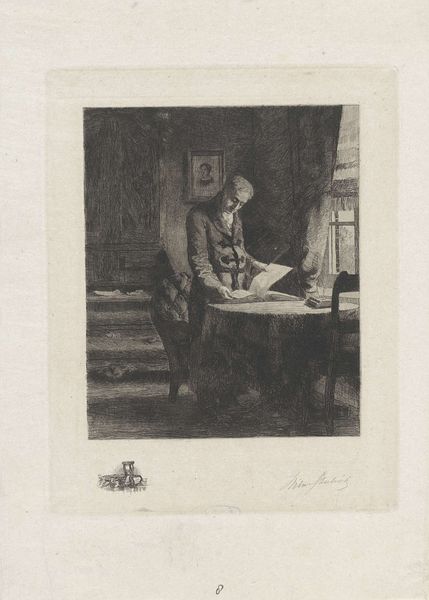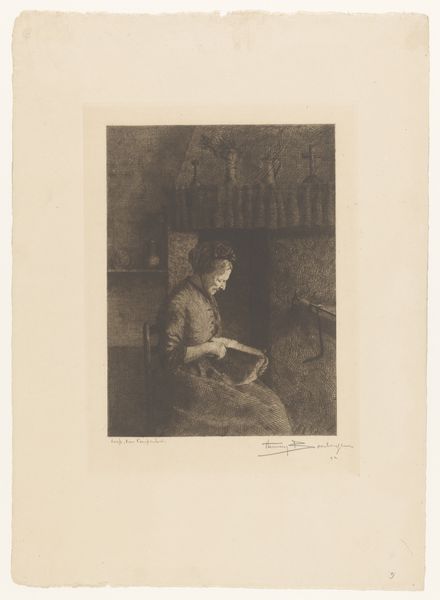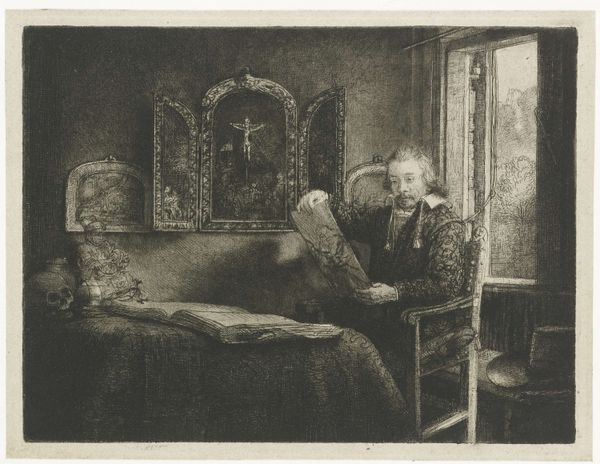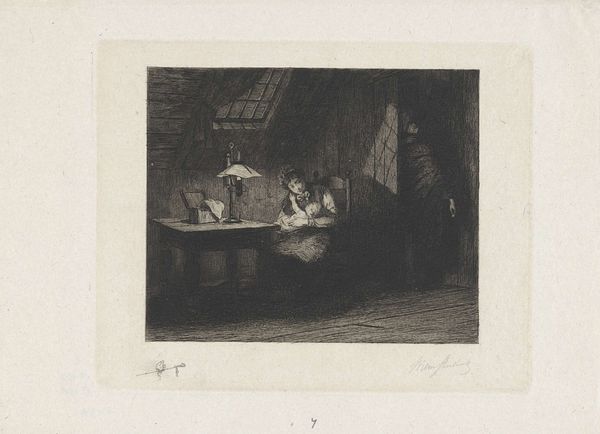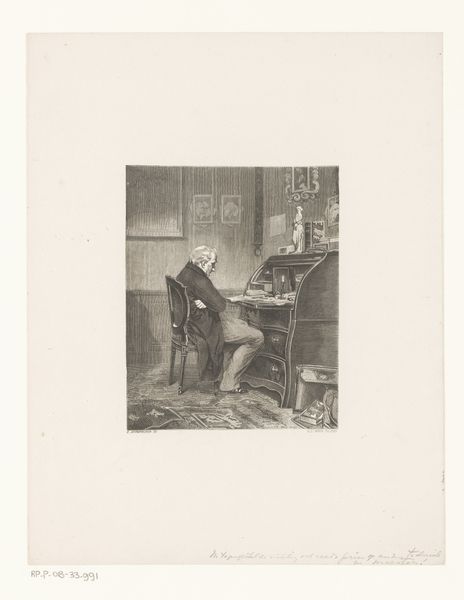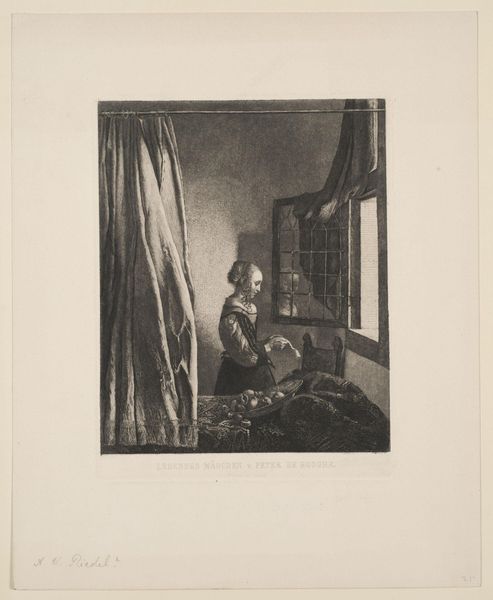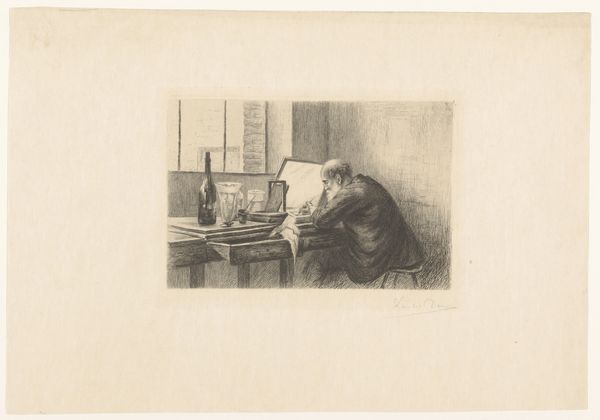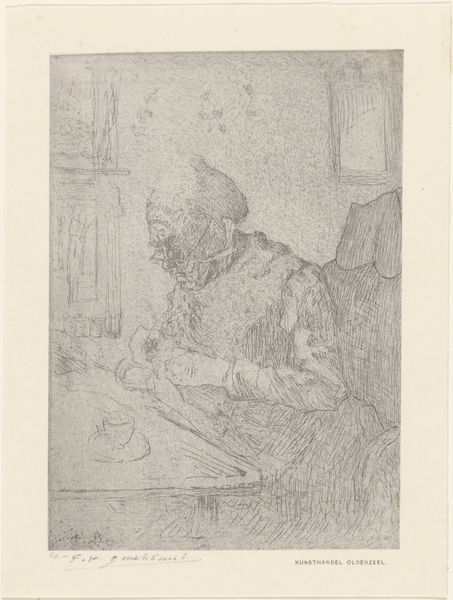
print, etching, intaglio, graphite
#
portrait
#
dutch-golden-age
# print
#
etching
#
intaglio
#
graphite
#
genre-painting
#
history-painting
#
graphite
#
realism
Dimensions: height 238 mm, width 184 mm
Copyright: Rijks Museum: Open Domain
Editor: This intaglio print, "Man leest de krant" or "Man Reading the Newspaper", created by Willem Steelink II between 1866 and 1886, has a surprisingly somber and contemplative mood. It really feels like we are intruding on a very private moment. What do you make of it? Curator: Well, consider the context. The rise of newspapers in the mid-19th century meant information – and therefore power – was circulating more widely. But who had access? The depicted interior suggests a certain bourgeois comfort, but the man's pensive pose raises questions. Is he contemplating the news itself? Its implications for his class, for society? Notice also the emphasis on the *act* of reading. What does the image of a man consuming news contribute to the social construction of knowledge? Editor: That's a good point! I hadn't considered it as a comment on the ownership or impact of information. The detail in the room almost makes it feel like this everyday space is the stage on which society is being shaped by what’s written in those pages. How does the piece contribute to the Realism movement if it seems less about documenting reality and more about raising questions? Curator: Precisely. It aligns with Realism by depicting an everyday scene, but subverts it. Steelink isn't just showing us a man reading, he's prompting us to question the societal implications of this seemingly simple act. It's the realism of thought, the private world of information processing becoming a shared visual experience. The genre elements elevate to become a history painting capturing society being shaped in this moment. What do you think its relation is to Dutch Golden Age paintings? Editor: Now that I think of it, the detail in the etching really reminds me of the Dutch masters in terms of subject and execution. Though more somber! I'll never look at a person reading the newspaper the same way again. Curator: Indeed. Art reveals that even an ordinary, quiet image is full of socio-historical weight. It's like opening a door into history, but through everyday life.
Comments
No comments
Be the first to comment and join the conversation on the ultimate creative platform.
